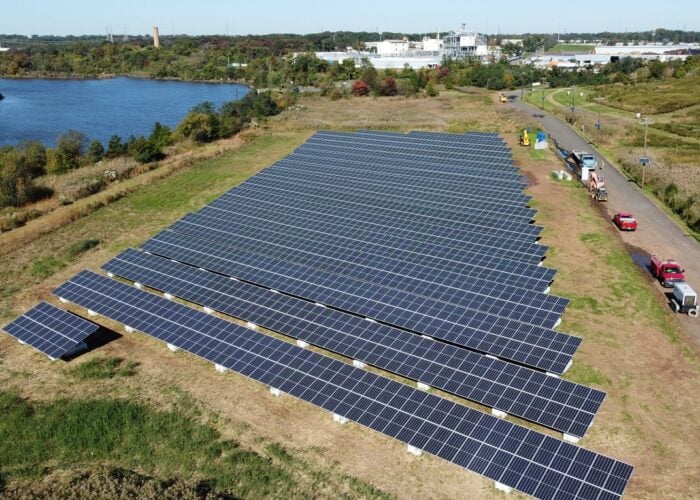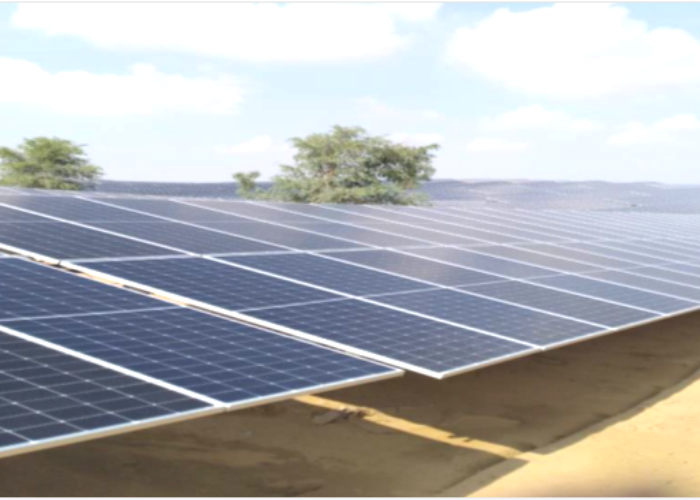
India’s traditional reliance on assembling PV modules using Chinese-made cells is undergoing a dramatic shift, with a new government mandate aimed at rapidly increasing domestic solar cell manufacturing capacity.
As of June 2024, India had a solar cell manufacturing capacity of 7.6GW, less than 10% of its 77.2GW module production capacity. However, market research firm Mercom India estimates that the country will make a significant leap to over 80GW of cell capacity by 2026. This figure will represent nearly 50% of the projected 172GW module capacity in operation by that year.
Unlock unlimited access for 12 whole months of distinctive global analysis
Photovoltaics International is now included.
- Regular insight and analysis of the industry’s biggest developments
- In-depth interviews with the industry’s leading figures
- Unlimited digital access to the PV Tech Power journal catalogue
- Unlimited digital access to the Photovoltaics International journal catalogue
- Access to more than 1,000 technical papers
- Discounts on Solar Media’s portfolio of events, in-person and virtual
Or continue reading this article for free
When asked about the feasibility of this ambitious projection, Raj Prabhu, CEO at Mercom Capital Group, tells PV Tech Premium that the expansion is primarily driven by the reimposition of the Approved List of Models and Manufacturers (ALMM) in April this year. The ALMM mandates sourcing modules exclusively from domestic manufacturers.
In addition, Domestic Content Requirement (DCR) rules oblige more than 25GW of projects to use modules made from domestically produced solar cells. The Production Linked Incentive (PLI) programme is expected to further bolster this capacity.
The Ministry of New and Renewable Energy (MNRE) has also proposed extending the ALMM order to include solar cells, which would require manufacturers to procure cells exclusively from listed suppliers by 2026.
This could result in “effectively eliminating all cell imports if international suppliers are not included,” says Prabhu.
Competing with China amid oversupply
While acknowledging the ambitious nature of this government-led push, Srikanth Hariharan, managing partner at the law firm Hariharan & Hariharan, notes that even achieving 50-60% of the target would represent a significant success, particularly in the context of Chinese dominance and global solar oversupply.
Indian PV products are partially shielded from this trend as the surplus of Chinese modules cannot be exported to India.
“Indian manufacturers cannot directly compete with the Chinese on cost,” explains Prabhu. “But with the reimposition of the ALMM order, imports have been shut out, and the Indian manufacturers have the market to themselves. The cost of India-made modules is high, but developers do not have access to any other products.”
Hariharan admits that there is no match to the Chinese cost of production in PV technology – mainly due to heavy government subsidies – but he also highlights China’s ability to deliver high quality product at these low prices.
“Therefore, the Indian manufacturers have to match up to that,” he adds. “Until that happens, even the local content requirements can only protect the Indian manufacturers to a certain extent, in the sense that ultimately, the raw materials, or the input products for manufacturing locally are also from the Chinese market.”
Matching China and building Indian manufacturing quality
Hariharan highlights the challenges of matching China’s low production costs and high-quality manufacturing at competitive prices, which benefit from substantial government subsidies.
“Indian manufacturers need to match that level of quality. Until then, local content requirements can only protect them to a certain extent, especially since raw materials and input products often still come from China,” he adds.
Steps to address this dependency are underway. Recently, Indian authorities recommended antidumping duties on solar glass imports from China and Vietnam after determining these imports had “injured” India’s domestic glass manufacturing industry.
Concerns about product quality also remain a challenge for India’s ambitions to establish a vertically-integrated PV manufacturing chain. Hariharan recounts being involved in arbitration cases where Indian-made PV cells failed to deliver desired output after as little as eight years of operation.
“Developers are very concerned about the quality of locally-made cells and modules, especially from smaller manufacturers,” Prabhu adds. “However, larger, established manufacturers are producing higher-quality products but need to scale up their capacities. Resolving quality issues will take time.”
India’s export potential
Despite the heavy focus on domestic supply focus, India has historically been a strong exporter of PV products to the US, which accounts for more than 97% of India’s module exports and over 88% of its solar cell exports, according to Mercom’s latest report.
However, as the US ramps up its own solar manufacturing capacity, Indian export opportunities may be impacted. Prabhu warns that already tightening US trade restrictions could exacerbate this challenge, particularly after the outcome of the recent presidential election.
“In light of these factors, it is becoming increasingly important for Indian manufacturers to prioritize domestic demand,” he adds.
In contrast, a ValueQuest Investment report, titled ‘Trump 2.0 – Pause or Continuity for Renewables’, speculates that the incoming US administration’s “anti-China” stance will also impact Chinese-backed entities in Southeast Asia, creating new opportunities for Indian manufacturers.
The US will need new trade partners, competitive manufacturing bases and a new supply chain to progress its new energy ambitions, the report states. This could lead to significant trade opportunities for India, particularly a “noticeable alignment” between Narendra Modi and Donald Trump has already been established.
The report emphasises India’s advantages – including a large-scale manufacturing base, STEM talent, and competitive costs – compared to Southeast Asia and Mexico. Moreover, India has not been named in the ongoing AD/CVD investigation in Southeast Asia, and several Indian companies are already building meaningful manufacturing capacity in the US, to mitigate risk.
Recent findings by the Institute for Energy Economics and Financial Analysis (IEEFA) and JMK Research & Analytics also suggest India could replace Southeast Asia as the leading solar PV exporter to the US.
As far as US demand for solar development is concerned, a new report from energy analyst firm Wood Mackenzie has said that renewable energy technologies in the US will remain competitive over the next four years, despite the uncertainties brought about Trump’s election. This is mainly due to bipartisan support for the Inflation Reduction Act (IRA) in Congress, competitive economics for renewable power and private sector net zero goals.
An alternative to China
Neither Hariharan or Prabhu commented on concerns raised by a Reuters article about possible links between Indian panel manufacturing and Chinese forced labour.
Between October 2023 to August this year, US Customs and Border Protection (CBP) had detained nearly US$43 million worth of Indian electronics shipments under the Uyghur Forced Labor Prevention Act (UFLPA), which bans the import of goods thought to be associated with forced labour.
Indian hopes to represent a robust alternative to Chinese supply to the US could have taken a hit from these reports. However, these concerns could drive greater interest in building upstream PV manufacturing capacity in India, and reducing reliance on products made by China, for which there has already been growing attention.
For example the Jakson Group is planning a 2.5GW TOPCon cell facility in India; the Avaada Group has started constructing a 5GW solar wafer, cell and module manufacturing facility in Maharashtra; and Gautam Solar is planning a 2GW TOPCon cell production plant in Haryana.







